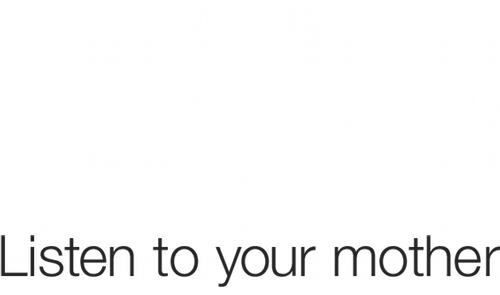 Mom bakes cracked wheat bread
Mom bakes cracked wheat bread
How many of you make your own bread? How many make it from scratch? Use mixes? Use a breadmaker? When I was in high school I started baking bread, and was fanatical about it in college and through my 20s, even managing to produce homemade loaves while working and caring for babies and young children. Then somewhere in there I got lazy. The corruption began gradually, first with using the Cuisinart to mix and knead the dough, but eventually using the breadmaker almost exclusively. And in the process I forgot about some of the wonderful breads I used to make years ago.
While searching for another recipe among all the clippings and xeroxed copies that I have stuffed into the back of an old 3-ring binder, I came across a stained, folded piece of copy paper that is so old it has turned brown. The bread recipe on it was sent to me by a dear friend, Page DeMello, someone whom I worked with at the Watergate Hotel back in the 70s. Her notes to the left of the ingredient list were obviously typed on a manual typewriter, if any of you know what those were! We actually used to keep our typewriters for a long time back in those days; the one I took to college with me had belonged to my grandmother when she was a student at Wellesley in the 1920s.
This bread has a rich, tangy flavor from the buttermilk and wonderful nubbly texture from the cracked wheat. It’s perfect if you still have a little bulgur lurking in your pantry from making tabbouli last summer. I have been baking this since before Leland was born and I’m so glad I rediscovered it!
Cracked Wheat Bread, from Page DeMello long time ago
Makes 2 loaves
- 1 1/2 cups boiling water
- 3/4 cup cracked wheat (bulgur)
- 1 cup buttermilk
- 1/4 cup unsulphured molasses
- 2 tablespoons honey
- 1/4 cup (1/2 stick) butter
- 1 envelope or 1 tablespoon active dry yeast
- 1/4 cup very warm water
- 1/2 teaspoon sugar or honey
- 2-3 cups unbleached white flour or bread flour
- 2 cups whole wheat flour
- 2 teaspoons salt
1. Pour water over wheat in large bowl. Let stand 1 hour or until ready to proceed.
2. Heat buttermilk, molasses, honey, and butter in small saucepan just until butter is melted. Stir to mix; cool to lukewarm. (I usually do this in a Pyrex measuring cup in the microwave.)
3. Sprinkle yeast over very warm water in large bowl or bowl of standing mixer. Stir in sugar or honey. Let stand 10 minutes or until bubbly.
4. Add buttermilk mixture and 2 cups of white flour to yeast. Beat until smooth. If you have time, let sponge rise until doubled, about 1 hour. This will improve flavor and make it easier to mix and knead later.
5. Gradually add the whole wheat flour, salt, and enough of the remaining white flour to make a dough that holds together and pulls away from bowl. If using standing mixer you will have to switch to the dough hook after adding the wheat flour. Take care not to add too much white flour or the bread will be dry and hard to form into loaves. It will still feel a little sticky even after kneading (I think that’s from the moisture in the bulgur) but it won’t after it’s risen.
6. Turn dough out onto floured surface and knead 10 minutes, adding more flour if necessary (but not too much!). Dough will still be slightly sticky. Of course, if using standing mixer it does the kneading for you. Place in large greased bowl, turning to bring greased side up. Cover; let rise in a warm place, away from draft, until double in volume, about 1 hour.
7. Punch dough down; turn out onto a lightly floured surface; knead a few times to press out air bubbles. Let rest 10 minutes.
8. Divide dough in half; shape each half into a loaf and place in 2 greased 8 1/2 × 4 1/2 × 2 1/2-inch loaf pans. Cover and let rise again until almost doubled. Don’t overproof!
9. Bake in a pre-heated 350º oven for 45 minutes or until loaves sound hollow when tapped, or until instant read thermometer measures about 200º when inserted into center of loaf. Remove loaves from pans to wire racks and cool before slicing.

Comments
May I use sourdough starter instead of buttermilk? I intend on trying your mom’s recipe as is, but I have the starter and try to use it when I can so it gets fed. Thanks, Kathy
Hi Kathy-Good idea! Sourdough starter is about the same thickness as buttermilk and would provide the same tang; I would definitely try it. I’m not sure how it would take to heating, though. You might want to heat the molasses, butter, and honey separately, then stir into the starter with the smaller amount of flour and let the sponge rise for an hour or so first.
Do you drain the excess water off the cracked wheat before you add it to the bread mixture or do you incorporate the water into the bread? When do you add the cracked wheat?
The bulgur should absorb most of the water and not need to be drained. You’re right, I don’t specify adding the cracked wheat, but it should be added to the sponge after it has risen, with the other ingredients; thanks for pointing that out.
Add a comment